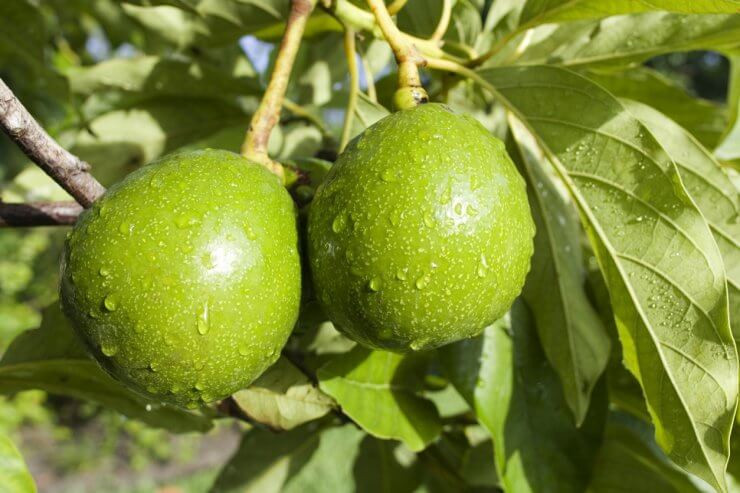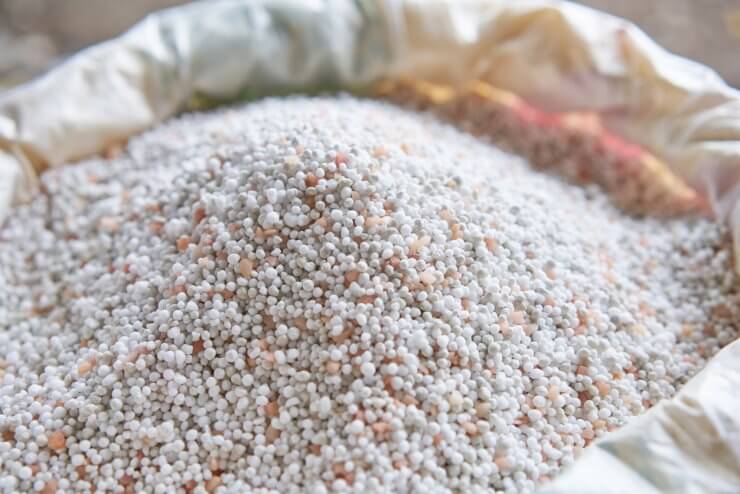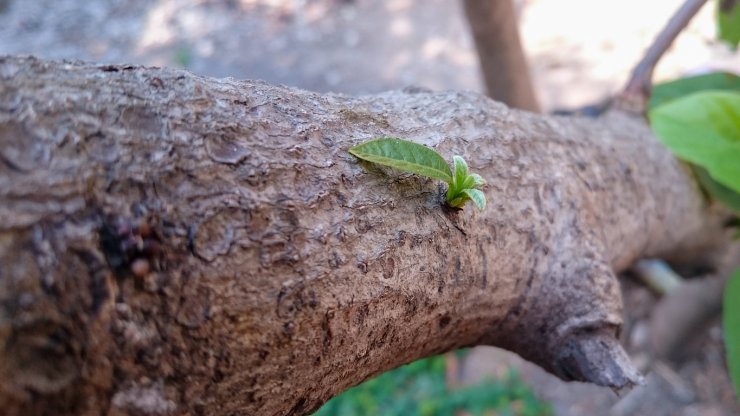
Avocados after rain
Once it’s planted, water the entire area under your new tree’s canopy every other day for a week. A new tree can hold up to about 2 gallons of water at planting.
After that, water two or three times a week for a couple of months, continuing this if no rain falls for five or more days. The idea is to allow the soil to dry out slightly before you water again. (Remember that the roots will stay in the top 6 inches of soil, so they’ll dry out quickly.)
Once the tree is mature, you’ll need to water about 2 inches’ worth every week during the summer.
Tip: When watering, apply the water at the base of the tree and avoid getting the leaves or trunk wet. Excessive moisture around the base of the tree causes dothiorella canker and phytophthora canker collar rot. If these problems occur, scrape the trunk to remove the affected bark.
Fertilizing

Fertilizer
Avocado trees don’t require too much fertilizer (and remember, don’t add it to the soil when you plant—just scatter the fertilizer over the soil above the roots), and it can be easy to over-fertilize and damage the shallow root system. A general home use fertilizer is just fine, but if you want to specialize, choose citrus tree or avocado food and give just a little fertilizer at a time.
At the same time, avocados are heavy nutrient feeders, and while soil in its native zones may be well-suited for an avocado, the tree’s nutritional needs will change and soil nutrients will be depleted over time, so don’t skip fertilizer all together.
Avocados prefer fertilizers with higher amounts of nitrogen compared to phosphorus and potassium. That means the first number of the N-P-K (nitrogen, phosphorus, potassium) ratio should be higher than the other two.
Tip: Don’t use a fertilizer that’s too high in nitrogen, because that encourages fast growth which in turn attracts thrips.
Also, if your fertilizer doesn’t contain zinc, consider feeding the tree with some zinc once a year. Always water in the fertilizer heavily.
Some gardeners find that all their avocado trees need is nitrogen, starting with a single tablespoon, in three applications in spring, summer, and fall.
In the second year, increase the nitrogen to 1/4 pound per year, divided into those three applications. Increase the nitrogen by 1/4 pound for each year of life.
Stop all fertilizing when the tree becomes dormant in late fall.
If your tree is planted at the right depth in a suitable location, and you water and protect it from pests and diseases, you won’t need to get carried away with fertilizer, and remember, fertilizing too heavily can harm the tree.
Pruning

Avocado tree with pruned branch and fresh growth.
Unlike some other fruit trees, avocado trees need little pruning. Basically, all you’ll be doing is pruning it to the shape and height you prefer. If your tree has a spreading canopy, you’ll need to do little or no pruning. Otherwise, if your tree grows straight up, try some careful heading cuts to keep the fruit producing within your reach. Remove terminal buds to stimulate the growth of lateral branches.
You’ll also want to prune off dead and diseased branches. Leaving them on the tree allows any diseases to spread. Always cut off at least 12 inches beyond the diseased area, and remember to disinfect with a 10 percent bleach solution of 1 part chlorine bleach and 9 parts water.
For light pruning, you can do it throughout the year. For heavy pruning, do it in late winter or spring.
Do you prune your avocado tree? Please tell us how much effort that requires and how often you do it.


 Previous
Previous

